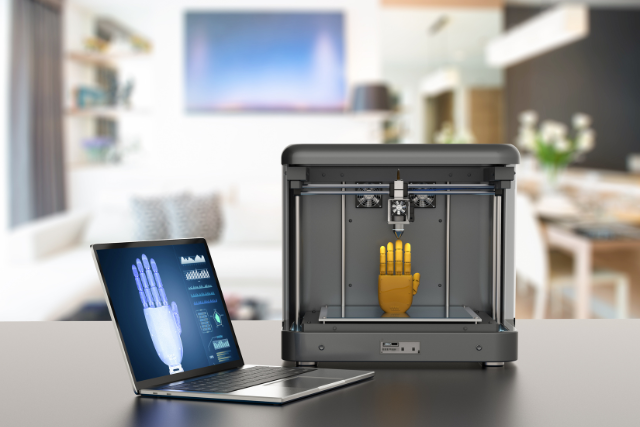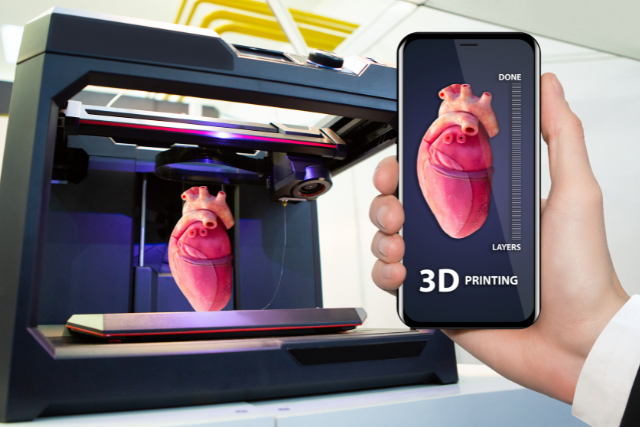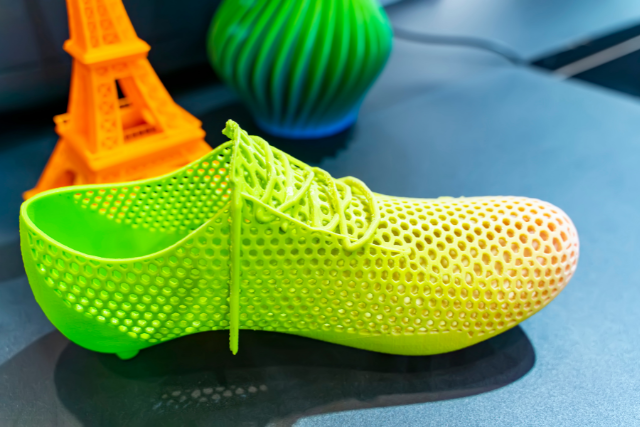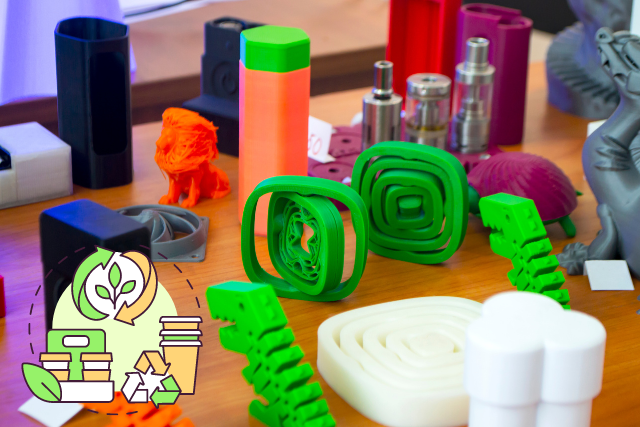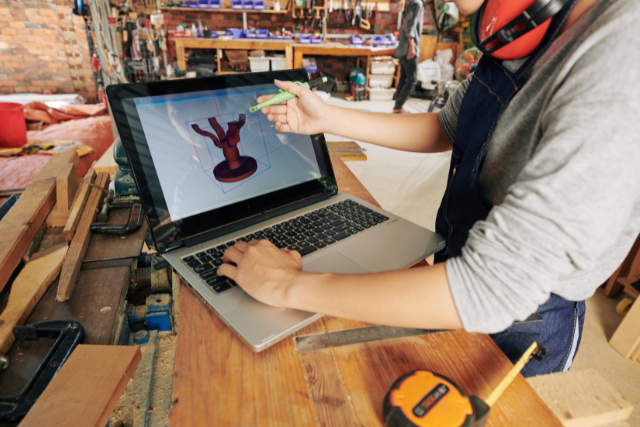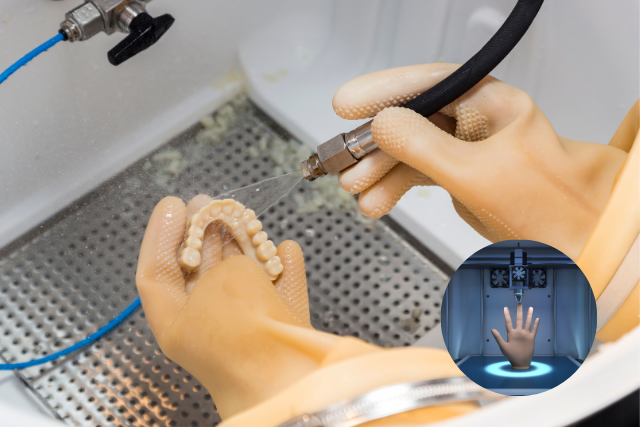Integrating 3D printing in education is like opening a Pandora’s box of creativity and innovation—a game changer. You’ll find that it enriches STEM learning by turning abstract concepts into tangible objects and enhances creative skills across all disciplines.
As you explore practical strategies for integration and tackle implementation challenges, you’ll see how this technology is not just preparing students for the future—it’s bringing the future to the classroom.
Are you curious about how this could transform your educational approach? Stick around, and let’s unpack this together.
Key Takeaways
- 3D printing enhances STEM learning through hands-on creation and problem-solving.
- It fosters creativity and innovation by allowing students to design and iterate.
- Practical integration bridges theoretical knowledge with real-world applications across disciplines.
- Prepares students for future careers by developing critical thinking and practical skills.
Understanding 3D Printing Basics
To truly grasp the potential of integrating 3D printing into education, starting with the basics of how this technology works is essential. Imagine having the power to turn your digital ideas into tangible reality right in your classroom.
That’s what 3D printing offers. At its core, 3D printing, or additive manufacturing, builds objects layer by layer from a digital file. You’re not carving out or assembling – you’re printing your imagination into existence.
You start with designing your object using computer-aided design (CAD) software. This could be anything from a simple keychain to complex mechanical parts. Once your design is ready, it’s sliced into hundreds or thousands of horizontal layers through slicing software. This is what prepares your model for printing.
Then, it’s showtime. Your 3D printer heats up and extrudes your material – usually a type of plastic – layer by layer onto the build plate.
Each layer is a cross-section of your final object, and as these layers cool down, they fuse to form a solid object. It’s like watching a sci-fi movie come to life, but here’s the kicker – it’s real, and you’ve got the power to wield this creative force.
Benefits of STEM Learning
Understanding the basics of 3D printing sets the stage for exploring its immense benefits in STEM learning. When you grasp how this technology works, you’ll quickly see how it can revolutionize education, especially in science, technology, engineering, and mathematics. Here’s why:
Real-World Problem Solving
You’ll tackle real issues using 3D models. This hands-on approach enhances problem-solving skills, making learning more relevant and engaging.
Enhanced Engagement
With 3D printing, you’re not just a passive learner. You’re directly involved in the creation process, which boosts your interest and investment in the subject matter.
Collaborative Learning
Projects often require teamwork. You’ll work together, sharing ideas and solutions, which fosters a collaborative learning environment.
Immediate Feedback
Seeing your project take form gives you instant feedback. You’ll quickly learn what works and doesn’t, allowing for rapid iteration and improvement.
These benefits show how incorporating 3D printing into STEM education isn’t just about keeping up with technology trends but empowering you with a deeper understanding and practical skills.
Enhancing Creative Skills
3D printing ignites your creativity, challenging you to design and bring your unique ideas to life. Imagine holding a physical model of something you’ve only dreamed about or seen in your mind’s eye.
You’re no longer confined to the limits of traditional materials or methods. If you can think it, you can make it.
As you dive into 3D printing, you’ll find yourself thinking differently. You’ll ask, “What if?” more often, pushing the envelope of your creative thinking.
This isn’t just about making gadgets or models; it’s a way to solve problems and see solutions in three dimensions visually. You’ll learn to iterate and refine your ideas with each print, enhancing your problem-solving skills alongside your creativity.
Moreover, 3D printing offers a tangible way to express your artistic side. Whether designing jewellery, art pieces, or custom tools, you’re taking control of the creative process from start to finish.
Practical Integration Strategies
You’re ready to bring 3D printing into your classroom, but how do you start? Let’s explore how to enhance your curriculum and plan your resources efficiently. These strategies will ensure you’re making the most of this innovative technology.
Curriculum Enhancement Techniques
Several practical strategies can significantly enhance curriculums by integrating 3D printing into educational settings. Here’s how you can make it happen:
- Incorporate 3D Design Projects: Encourage students to create their 3D models. This sparks creativity and practical application of theoretical knowledge.
- Interdisciplinary Projects: Use 3D printing to bridge subjects. For example, print historical artefacts for history lessons or molecular models for science.
- Problem-Solving Challenges: Set up contests where students must design solutions to real-world problems using 3D printing. It’s engaging and fosters critical thinking.
- Prototype Development: Allow students to develop prototypes of their innovative ideas. It’s a tangible way to explore entrepreneurship and engineering principles.
Resource Allocation Planning
To effectively integrate 3D printing into your curriculum, planning how you’ll allocate resources such as time, equipment, and materials is crucial.
Start by assessing what you’ve got. How many printers are available?
What’s the budget for materials?
Then, think about time. You’ll need to carve out moments in your schedule to teach the technology and let students get hands-on experience.
Don’t let costs scare you off. Look for grants, partnerships, or crowdfunding to boost your resources. And remember, sharing is an option.
Maybe there’s a way to rotate a single printer among different classes or departments? It’s all about making the most of what you have, ensuring every student gets a shot at this game-changing skill. Let’s make it happen!
Overcoming Implementation Challenges
While integrating 3D printing into educational settings poses unique challenges, practical strategies to navigate these hurdles effectively exist. You’re not alone in wanting to break free from traditional constraints and dive into the innovative world of 3D printing. Here’s how you can overcome these obstacles:
Start Small and Scale Up
Don’t feel pressured to overhaul your entire curriculum overnight. Begin with a single printer and a few projects, then expand as you gain confidence and resources.
Seek Out Grants and Partnerships
Money doesn’t have to be a barrier. Look for tech grants, partner with local businesses, or launch a crowdfunding campaign to support your 3D printing endeavours.
Offer Professional Development
Empower your teachers by providing training on 3D printing technology and its application in education. When they’re onboard and excited, students will be too.
Leverage Online Communities
You’re not reinventing the wheel. Join forums, educational blogs, and social media groups dedicated to 3D printing in education. You’ll find support, inspiration, and maybe even collaboration opportunities there.
Facing these challenges head-on, you’ll enrich your students’ learning experience and set them on a path to becoming innovative thinkers and problem-solvers.
Future-Proofing Education
By integrating 3D printing into education, you’re not just keeping pace with technology but preparing students for the future.
It’s about boosting their creativity and innovation, giving them the skills they’ll need for tomorrow’s job market, and sharpening their problem-solving abilities.
This approach doesn’t just future-proof their careers; it also makes learning more engaging and relevant.
Enhancing Creativity and Innovation
Integrating 3D printing into education fuels your creativity and innovation, preparing you for the challenges of tomorrow’s world. This technology isn’t just about making extraordinary objects; it’s a gateway to thinking differently and breaking out of conventional moulds. Here’s how you’ll benefit:
- Problem-solving skills: Tackling design and printing challenges sharpens your ability to think independently.
- Creative expression: You’ll bring your wildest ideas to life, no longer limited by the materials.
- Collaborative projects: Working with others on designs fosters teamwork and exposes you to new perspectives.
- Iterative learning: You’ll learn the power of revision, continuously improving your designs based on real-world testing.
Embrace 3D printing to unleash your potential and step confidently into a future where creativity reigns supreme.
Skills for Tomorrow’s Careers
Embracing 3D printing unlocks your creativity and equips you with essential skills for thriving in future careers.
It’s a game-changer, putting cutting-edge technology at your fingertips and making you a hot commodity in tomorrow’s job market. You’ll learn digital design, a gold skill in industries from engineering to fashion. It doesn’t stop there.
Mastering 3D printing boosts your digital literacy, making you fluent in the language of the future. Plus, understanding the mechanics behind 3D printers sharpens your technical skills, setting you apart in a tech-driven world.
Let 3D printing be your ticket to a future-proof career.
Promoting Problem-Solving Abilities
Diving into 3D printing challenges you to solve complex problems, sharpening your ability to navigate future uncertainties easily. This tech isn’t just about creating extraordinary objects; it’s a training ground for your mind. Here’s how you’ll boost your problem-solving skills:
- Identify and Define Problems: You’ll quickly learn to pinpoint and articulate issues.
- Generate Solutions: Brainstorming becomes second nature as you explore multiple design possibilities.
- Prototype and Test: Through trial and error, you’ll refine your ideas, embracing failure as part of the learning process.
- Iterate and Improve: You’ll constantly seek better solutions, a habit that serves you well in any career.
Embrace 3D printing to future-proof your education. It’s not just about what you create but how you think and solve problems that matter.
Conclusion
So, you’ve seen how 3D printing can revolutionize education, right? From boosting STEM skills to sparking creativity, it’s a game-changer. You’ve got this!
Start small, tackle hurdles head-on, and remember, it’s all about preparing students for the future. Integrating 3D printing isn’t just a smart move; it’s essential.
Explore it, experiment and watch your classroom become an innovation hub. Let’s future-proof education together. Are you ready to leap?
FAQs
1. How does 3D printing benefit STEM education?
3D printing benefits STEM education by providing hands-on learning experiences, enhancing problem-solving skills, increasing student engagement, and fostering collaborative learning environments.
2. What are the initial steps to integrate 3D printing into a curriculum?
Start by incorporating simple 3D design projects, seeking grants or partnerships for funding, offering professional development for teachers, and leveraging online communities for support and ideas.
3. What challenges might educators face when implementing 3D printing, and how can they overcome them?
Challenges include high costs, lack of training, and limited resources. Educators can overcome these by starting small, seeking financial support through grants and partnerships, providing professional development, and joining online communities for guidance and support.
4. How does 3D printing prepare students for future careers?
3D printing prepares students by developing skills in digital design, enhancing digital literacy, improving technical knowledge, and fostering a mindset geared towards innovation and problem-solving.
5. Can 3D printing be integrated into non-STEM subjects?
Yes, 3D printing can be integrated into non-STEM subjects by using it to create historical artefacts, art pieces, and other interdisciplinary projects that enhance learning and creativity across various disciplines.

